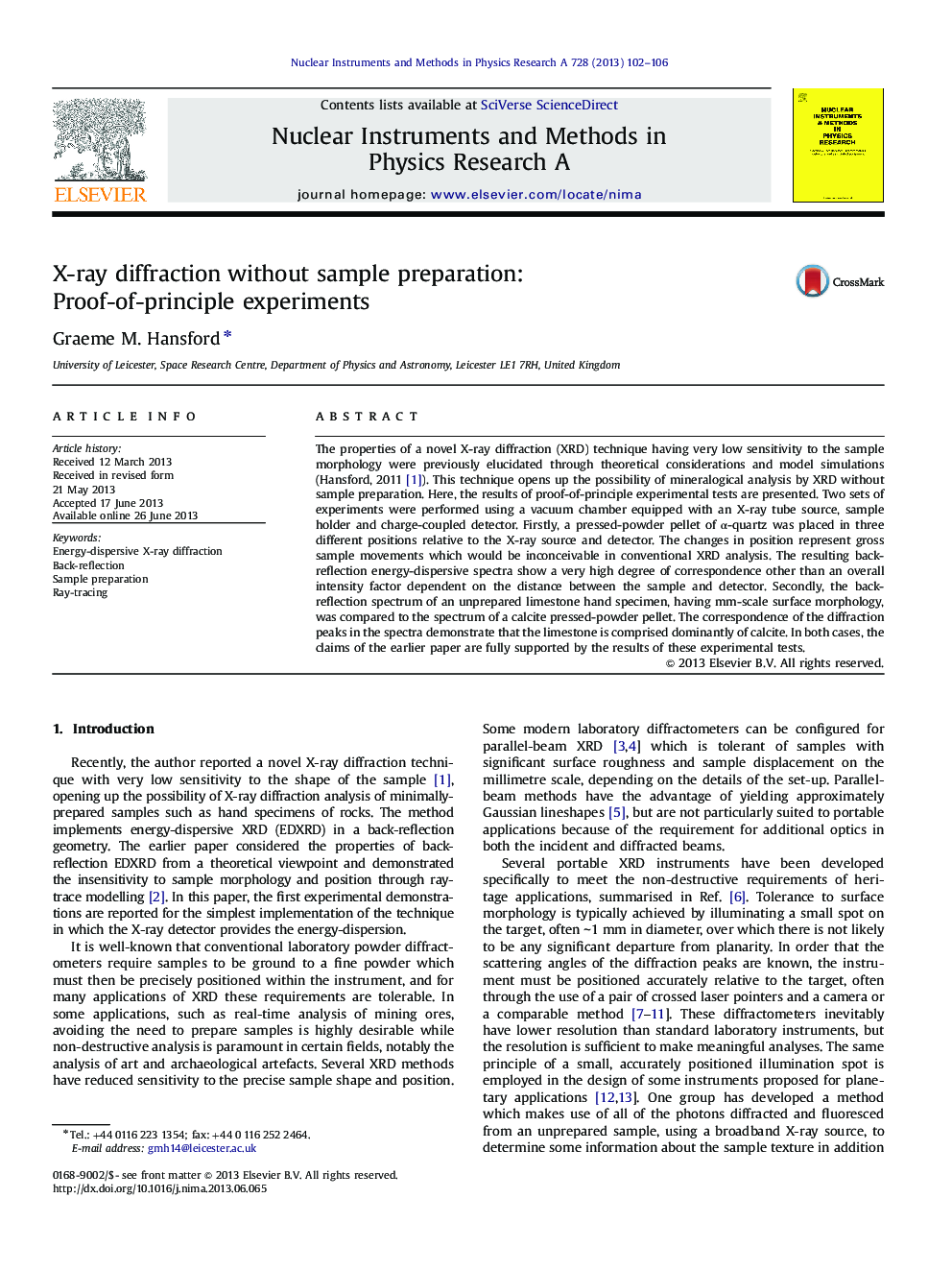| Article ID | Journal | Published Year | Pages | File Type |
|---|---|---|---|---|
| 8179184 | Nuclear Instruments and Methods in Physics Research Section A: Accelerators, Spectrometers, Detectors and Associated Equipment | 2013 | 5 Pages |
Abstract
The properties of a novel X-ray diffraction (XRD) technique having very low sensitivity to the sample morphology were previously elucidated through theoretical considerations and model simulations (Hansford, 2011 [1]). This technique opens up the possibility of mineralogical analysis by XRD without sample preparation. Here, the results of proof-of-principle experimental tests are presented. Two sets of experiments were performed using a vacuum chamber equipped with an X-ray tube source, sample holder and charge-coupled detector. Firstly, a pressed-powder pellet of α-quartz was placed in three different positions relative to the X-ray source and detector. The changes in position represent gross sample movements which would be inconceivable in conventional XRD analysis. The resulting back-reflection energy-dispersive spectra show a very high degree of correspondence other than an overall intensity factor dependent on the distance between the sample and detector. Secondly, the back-reflection spectrum of an unprepared limestone hand specimen, having mm-scale surface morphology, was compared to the spectrum of a calcite pressed-powder pellet. The correspondence of the diffraction peaks in the spectra demonstrate that the limestone is comprised dominantly of calcite. In both cases, the claims of the earlier paper are fully supported by the results of these experimental tests.
Related Topics
Physical Sciences and Engineering
Physics and Astronomy
Instrumentation
Authors
Graeme M. Hansford,
